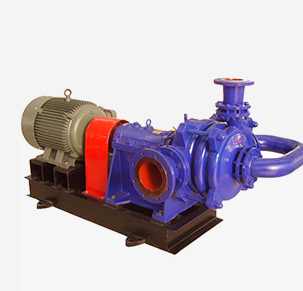English
- Afrikaans
- Albanian
- Amharic
- Arabic
- Armenian
- Azerbaijani
- Basque
- Belarusian
- Bengali
- Bosnian
- Bulgarian
- Catalan
- Cebuano
- Corsican
- Croatian
- Czech
- Danish
- Dutch
- English
- Esperanto
- Estonian
- Finnish
- French
- Frisian
- Galician
- Georgian
- German
- Greek
- Gujarati
- Haitian Creole
- hausa
- hawaiian
- Hebrew
- Hindi
- Miao
- Hungarian
- Icelandic
- igbo
- Indonesian
- irish
- Italian
- Japanese
- Javanese
- Kannada
- kazakh
- Khmer
- Rwandese
- Korean
- Kurdish
- Kyrgyz
- Lao
- Latin
- Latvian
- Lithuanian
- Luxembourgish
- Macedonian
- Malgashi
- Malay
- Malayalam
- Maltese
- Maori
- Marathi
- Mongolian
- Myanmar
- Nepali
- Norwegian
- Norwegian
- Occitan
- Pashto
- Persian
- Polish
- Portuguese
- Punjabi
- Romanian
- Russian
- Samoan
- Scottish Gaelic
- Serbian
- Sesotho
- Shona
- Sindhi
- Sinhala
- Slovak
- Slovenian
- Somali
- Spanish
- Sundanese
- Swahili
- Swedish
- Tagalog
- Tajik
- Tamil
- Tatar
- Telugu
- Thai
- Turkish
- Turkmen
- Ukrainian
- Urdu
- Uighur
- Uzbek
- Vietnamese
- Welsh
- Bantu
- Yiddish
- Yoruba
- Zulu
Telephone: +86 13120555503
Email: frank@cypump.com
Nov . 26, 2024 23:27 Back to list
Sewage Ejector Pump Solutions for Your Basement Bathroom Needs
The Importance of Sewage Ejector Pumps for Basement Bathrooms
Installing a bathroom in your basement may seem like an excellent way to enhance your home’s functionality, but it comes with unique challenges, particularly concerning wastewater management. One critical component of this system is the sewage ejector pump. Understanding its role, importance, and installation can help homeowners maintain a clean, functional, and efficient basement bathroom.
What is a Sewage Ejector Pump?
A sewage ejector pump is a type of pump specifically designed to transport wastewater from lower elevations—like a basement bathroom—up to the main sewer line or septic system. Unlike typical sump pumps, which remove water from a flooded area, sewage ejector pumps handle waste and can process materials commonly found in domestic sewage. They are equipped with a powerful motor and a grinding mechanism, enabling them to handle solid waste effectively, making them an essential component for any basement bathroom with plumbing located below the main sewer line.
Why You Need a Sewage Ejector Pump
Basement bathrooms often face plumbing challenges primarily due to gravity's role in wastewater flow. When the bathroom fixtures are situated below the level of the main sewer line, gravity cannot assist in moving the waste away from your home. This is where the sewage ejector pump comes into play. It prevents the backup of sewage or wastewater and protects your home from potential plumbing disasters.
1. Preventing Sewage Backups Without an ejector pump, homeowners risk clogged pipes and sewage backups, which can lead to significant damage and costly repairs. An adequately functioning pump ensures that wastewater is efficiently directed away from the basement.
2. Health and Sanitation Raw sewage poses health risks, including foul odors and exposure to harmful pathogens. By installing a sewage ejector pump, homeowners can maintain a sanitary environment in the basement.
3. Increased Value Having a functional bathroom in the basement can significantly increase the value of your home. A clean and efficient sewage management system adds to the appeal and marketability of your property.
sewage ejector pump for basement bathroom

Installation Considerations
When installing a sewage ejector pump, several factors must be considered
- Sizing the Pump Not all pumps are designed equal. It is crucial to select a pump that meets the specific needs of your basement bathroom. Consider the number of fixtures, the pump’s capacity, and the expected flow rate.
- Location The pump should be installed in a pit or basin that is properly sealed to prevent any leaks or odors. The location also needs to facilitate efficient drainage to the main sewer line.
- Electrical Supply Since sewage ejector pumps require electricity to operate, ensure that an accessible power source is available. It is advisable to use a dedicated circuit to prevent overloads.
- Regular Maintenance Like any mechanical device, sewage ejector pumps require regular maintenance. Homeowners should keep an eye on the pump's performance and schedule professional inspections as necessary.
Conclusion
A sewage ejector pump is an invaluable investment for anyone looking to install a basement bathroom. It ensures the proper disposal of waste, protects against plumbing emergencies, and contributes to a clean home environment. Proper installation and maintenance of the pump can lead to hassle-free operation and contribute to the overall value of your property. By understanding the importance of sewage ejector pumps, homeowners can confidently proceed with their basement bathroom projects, enjoying the additional comfort and convenience they offer.
-
ISG Series Vertical Pipeline Pump - Chi Yuan Pumps Co., LTD.
NewsJul.30,2025
-
ISG Series Vertical Pipeline Pump - Chi Yuan Pumps Co., LTD.|energy-efficient fluid handling&industrial durability
NewsJul.30,2025
-
ISG Series Vertical Pipeline Pump - Chi Yuan Pumps | Advanced Engineering&Industrial Efficiency
NewsJul.30,2025
-
ISG Series Pipeline Pump - Chi Yuan Pumps | High Efficiency, Energy Saving
NewsJul.30,2025
-
ISG Series Vertical Pipeline Pump-Chi Yuan Pumps|High Efficiency&Reliable Performance
NewsJul.29,2025
-
ISG Series Vertical Pipeline Pump|High Efficiency&Low Noise
NewsJul.29,2025










